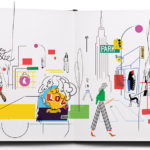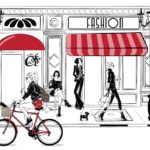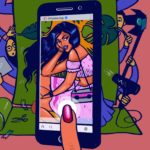Who Did It First?
Originality and innovative design are the result of intellectual and creative hard work and inevitably at risk of being copied. In the past few years, many allegations of copying in fashion have been made, leading to an ongoing debate about the fine line between inspiration and appropriation. Fashion is an intellectual-property (IP) intensive industry, constantly creating and commercialising creativity and innovation.
Business objectives and modern consumerism are partly responsible for this scenario since they put designers under immense pressure to produce multiple collections per year, limiting the time for real creative research and inspiration to less than necessary, some may opine. But what is the difference between inspiration and copying? Inspiration is defined by most dictionaries as ‘the process of being mentally stimulated to do or feel something, especially to do something creative’. Therefore, inspiration is the stimulation to create and creativity requires inspiration, making the two reciprocal.
One hitch in design is that not everything can be legally safeguarded. Copyright protects two-dimensional work such as prints, patterns and photographs while three-dimensional work is protected by design rights, which cover the appearance, structure and look of the product. Design rights also protect part of a product; for example, a pocket detail. However, a technique such as a type of stitch cannot be protected, though the end result in terms of final appearance of the product can be. The requirements are quite daunting but protecting every design in each collection indefinitely is unimaginable.
The fashion industry will always be under scrutiny and the copyright debate will unfailingly be a part of it. The very fact that designers get inspired, reinterpret, borrow and reinvent makes the fashion industry so exciting.
The business slant is more positive as it is believed that you are not good until you are copied — indicating that the brand is worth copying. An interesting effect in luxury consumption is that it helps boost the pride of consumers who can afford the real stuff. Furthermore, this practice helps trends diffuse into the mass market and leads to continuous reinterpretation of styles and collections.
There are many platforms that follow and analyse the phenomenon and candidly make interesting comparisons. Into the Fashion is one of the original blogs analysing IP from a design perspective. The blog was launched in 2009 by German-born, Milan-based Diana Marian Murek — designer, journalist and academic (and Verve’s guest editor this month). The blog provides a special analysis of trends and inspirations of designers, noting the similarities between designs and designers.
Her angle is that the very nature of fashion is cyclical and that fashion lives from reinvention.
The strength of the blog is that it is well-researched and provides context, historical referents and rationale, to the comparisons which makes it quite educational. Diana hints that it is a part of the creative process of designers to get their inspiration from somewhere.
That being said, a designer inspired by coconut trees would easily say so, but why is it harder to acknowledge when the inspiration comes from another designer? It is rather flattering for one, but seemingly too embarrassing for the other. Stylistic identity is defined as the physical aspects that consumers would only associate with specific brands such as Issey Miyake’s Pleats Please collection. Inspiration is respectable, as long as designers are able to reinvent or reinterpret in their own stylistic identity instead of shamelessly plagiarising.
The Instagram account Diet Prada adopts a more humorous approach. It calls out those who are involved in plagiarism. Duo Tony Liu and Lindsey Schuyler who both studied design and fashion history, have a different tone altogether, consistent with the reason why they started the anonymous account in the first place. The two friends are archiving their lookalike findings in a fun way…the way they actually talk to each other.
Terms such as no-mercy, injustices and copycats are associated with this handle. Many followers are unaware of the people behind the account which counts some very high-profile names as its followers! The angle here is that designers should acknowledge the sources of inspiration or else be ‘called out’. The Rick Owens SS16 ‘human backpack’ is a good example. The designer was highly criticised and he later publicly acknowledged the fact that he was indeed inspired by Australian artist Leigh Bowery.
The handle also comments on larger issues such as cultural appropriation. The latest post about the Gucci dastaar stimulated quite a heated discussion generating over a thousand comments. The duo also suggests ways Gucci could have avoided criticism.
Using the power to influence could of course be used to impact bigger issues but it leaves some followers muddled. For example, some criticise the fact that Diet Prada also calls out mass market retailers for their knock-offs; this is what they do and how they bring fashion to the masses, they contend.
Fashion being, of course, a commentary of the Zeitgeist led to the trend of being ‘authentically fake’. Riccardo Tisci copied an actual fake Givenchy, Alessandro Michele playfully introduced a Guccy logo and font referencing Sega, and Diesel opened a fake shop selling misspelt Deisel. The pop-up store opened in New York’s Chinatown and also looks like a fakes’ store!
As an audience of the fashion spectacle, join the fun, learn and laugh about it.
Related posts from Verve:
Verve Trending
Sorry. No data so far.
us on Facebook to stay updated with the latest trends





